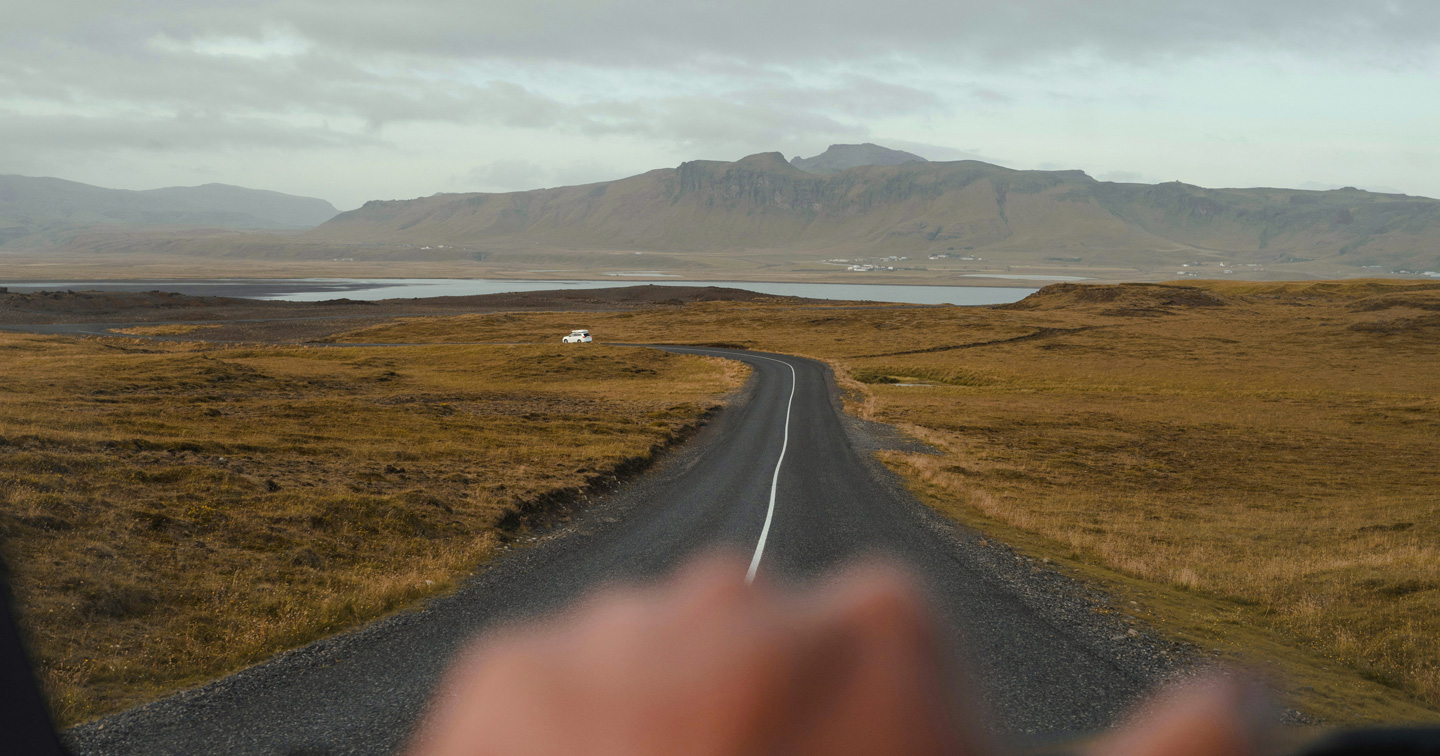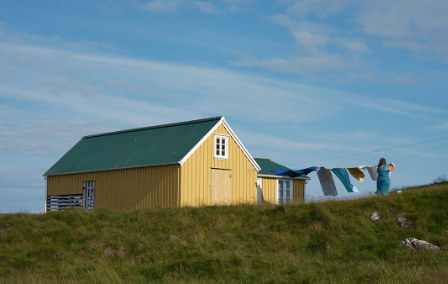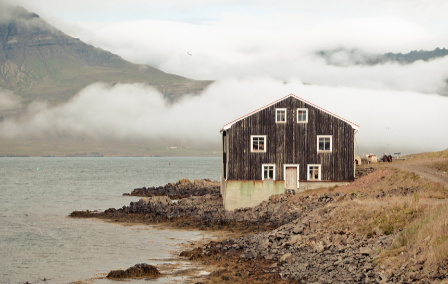Published 10th Apr. 2023
Reading time
Iceland has a mysterious air. Midnight Sun, moody cliffsides and Tolkien-esque landscapes all contribute to a magical energy that’s only compounded by the incredible creatures that live here. Whether unusual birds or intriguing mammals, the wildlife in Iceland is one of many reasons to visit this captivating country that never fails to surprise. Read on for our list of what creatures to look out for as you journey through the land of fire and ice.
As the only land animal native to Iceland, Arctic foxes are the original Icelanders, thought to have made their way here after the last Ice Age (the one that ended 25,000 years ago, not the one with Sid and Manfred). These fluffy foxes are smaller and furrier than the ones you may have seen scampering across the streets of London or other UK cities, and their thick, warm coat allows them to endure temperatures around 100°C cooler than their internal core temperature. While Arctic foxes sport that iconic white coat during winter, they shed this during the summer months to reveal thinner fur that’s usually grey or brown. In theory, you can find these other-worldly creatures all over the country, but most live in the Westfjords where the many bird cliffs provide a reliable source of food. Hornstrandir Nature Reserve is one of the best places to see arctic foxes in Iceland, a breath-taking wilderness in the country’s north-west, and a protected area for this furry species.
If you’ve set your heart on seeing one of these adorable birds, you’re in luck: 60% of the world’s puffins breed in Iceland. Largely monogamous, puffins usually mate for life and raise their puffling (the cutest name for a baby animal) during the summer months. Although puffins spend most of their time at sea, your best chances of spotting them are when they’re nesting, and this is also when their bill has that bright orange glow that helps them to attract mates and look more impressive in the pictures that you’ll undoubtedly send to envious friends back home. Drangey Island’s high cliffs are home to plenty of puffin pals, along with the cliffs that tower above the remote village of Vik in southern Iceland. The Westman Islands are home to the world’s largest puffin colony, while the Látrabjarg Cliffs are perhaps the most famous puffin-spotting site. Beyond these locations, there are nesting sites all over the country, just be sure to visit between May and August when they’re most likely to be found at their breeding grounds.
Puffins may be Iceland’s most iconic bird, but this next animal has clinched the title of the country’s national bird: the gyrfalcon. A gyrfalcon’s reputation might not precede it, but it’s got some spectacular stats on its side. These are the world’s largest falcons, with females growing up to 25.5 inches with a 49-63-inch wingspan. These fierce predators nest on remote cliffs and are some of the fastest birds in the world, with an average speed of 50-68 miles per hour. European rulers have long revered this impressive animal, which was deemed the best bird for falconry along with being highly prized by Vikings for its hunting skills – it’s no wonder that Iceland is so proud of them. Gyrfalcons are most common in north-east Iceland in areas like Lake Myvatn and Laxá River. If you’re lucky enough to catch a glimpse of a gyrfalcon, it’s important to keep a distance, especially when they’re nesting. If you’re deemed to be interfering with the falcons, you may find yourself at the mercy of the Icelandic authorities.
What’s a list of wildlife in Iceland without a mention of the mystical reindeer? These creatures may not be native to the land of fire and ice, but they fit right in amid snow-capped mountains, wintry plains and frozen rivers. Reindeer are the largest among all the land mammals introduced to the country, brought over from Norway in the late 18th century in the hope that they could be herded and utilised as they were in Lapland. However, the harsh landscape proved too challenging for the animals, and most groups quickly died off. There are currently around 3,000 in the country, mainly living in the East Fjords where the conditions are more forgiving. Wild reindeer aren’t the easiest animals to find in Iceland, but Seyðisfjörður is the most reliable place to see them (you might come across them strolling beside the scenic road that leads to the fjord). Apart from that, you’ll have to hope for a surprise sighting as you journey around Iceland’s eastern regions, which we think makes them all the more magical.
We’ve arguably saved the best until last, because what’s more arresting than the sight of a whale arching with magnificence across the surface of the water. This experience is coveted by many but only afforded to a lucky few, and we’d love for you to be one of them. Iceland’s Baltic waters make for one of the world’s best whale-watching areas thanks to their high concentration of food for these impressive mammals. Around 23 whale species have been spotted around Iceland, and a boat trip around Eyjafjordur gives you the chance to see many of them including minke whales, sei whales, fin whales, humpback whales and blue whales. As if that wasn’t enough, Iceland also brings you the opportunity to spot killer whales – also known as orcas – which are technically part of the dolphin family. Take a tour around the Snaefellsnes Peninsula during spring or winter for the best chance of seeing these amazing animals in their natural habitats.

Using a wealth of experience, our team can help you venture off the well-trodden trail of the Golden Circle to areas such as the Snaefellsnes Peninsula, a microcosm of the ‘land of fire and ice’, or to the Highlands in the country’s centre for epic hiking trips. We plan every experience to suit you, whether you want to snowmobile across a glacier or taste freshly caught seafood on the deck of a fishing trawler. In a country where changeable weather conditions and volcanic activity can quickly disrupt plans, our excellent team of local guides and our helpful Concierges offer invaluable support.
ENQUIRE NOWPractical advice and inspiration for your next trip

With lingering daylight, lush landscapes and adventurous outdoor activities, a summer holiday in Iceland promises to be one for the books. At this time of year, the weather is at its warmest (10°C on average, mind you, so don’t forget your winter knits) and the light barely fades thanks to the Midnight Sun. From hiking and hot springs to whale watching and glacier tours, there's something for everyone to enjoy.
1st May 2025 - Iceland Travel Inspiration

It’s a gratifying feeling when someone asks you where you got your jumper from and you get to say, ‘my recent trip to Iceland’. Or, once presented with a slab of Omnom chocolate, you can tell your nearest and dearest that it in fact travelled all the way from ‘The Land of Fire and Ice’. For this isn’t a country of shot glasses, fridge magnets and ‘all I got was this lousy t-shirt’ t-shirts. It’s hand-harvested sea salt that’s been produced from Iceland’s geothermic energy since the 17th century, skincare from the original Blue Lagoon and gripping Viking Sagas.
3rd January 2024 - Iceland Travel Inspiration

Iceland doesn’t mess around when it comes to sustainability. With tourists outnumbering residents, the country has found ways to ensure the constant flow of footprints cause minimal damage to the environment. But responsibility doesn’t just lie with the country – visitors also have a duty to protect the world-class hot springs and national parks. Luckily, we’ve got a rundown of top tips to encourage sustainable tourism in Iceland.
22nd November 2023 - Iceland Responsible Travel

Our team of destination experts will get to know you and your unique requirements for your holiday

We work with you to build an ultra-personalised holiday itinerary with your choice of accommodation, experiences and activities

All of our holidays include little extras designed to make a big difference to your trip, from fast-tracking you through airport check-in and security to our network of local Concierges